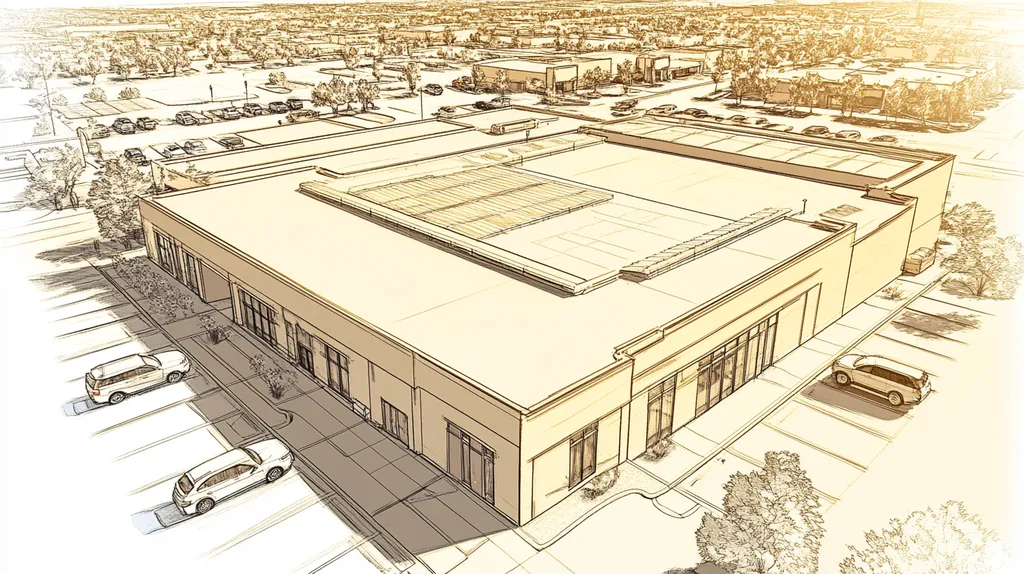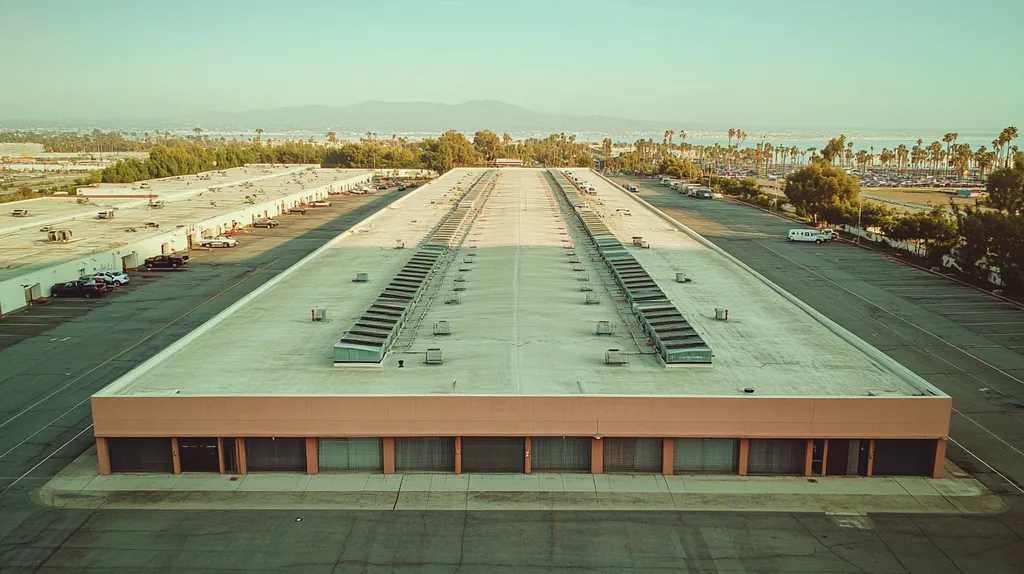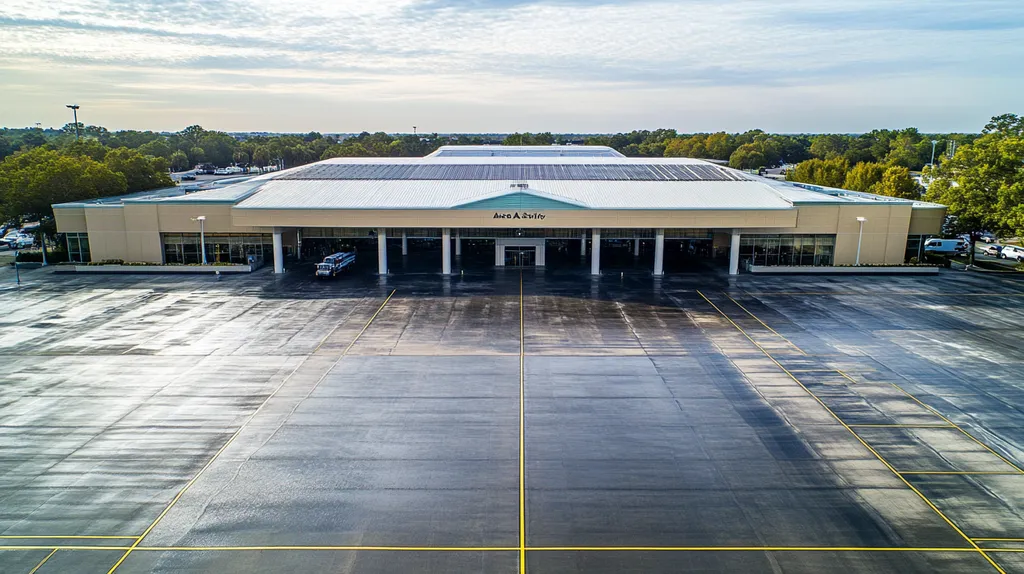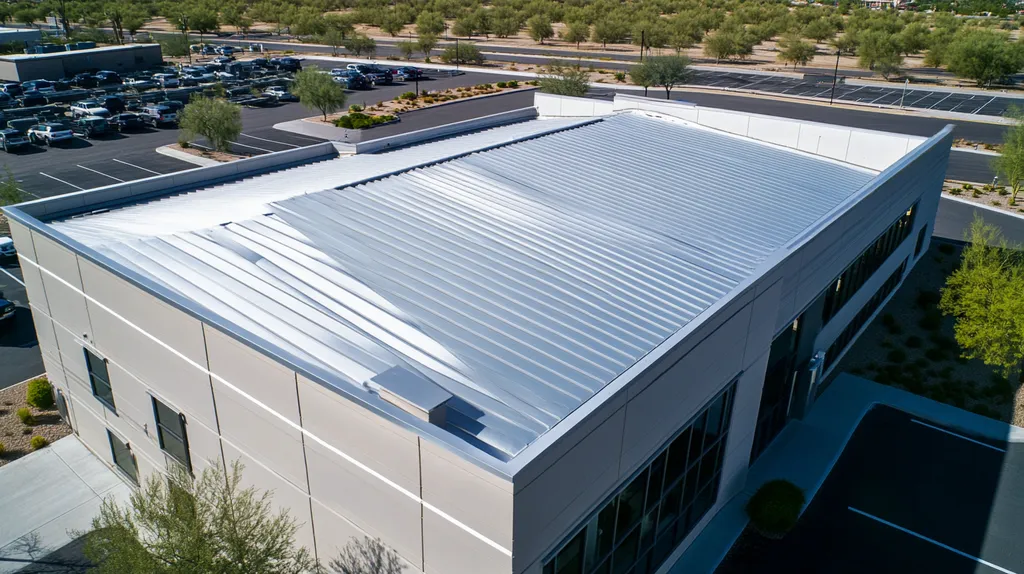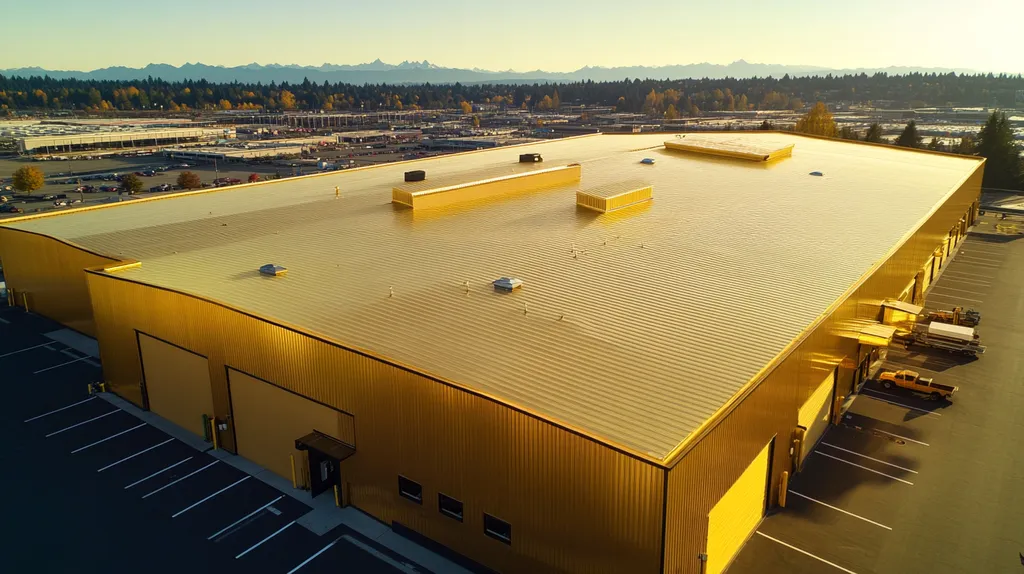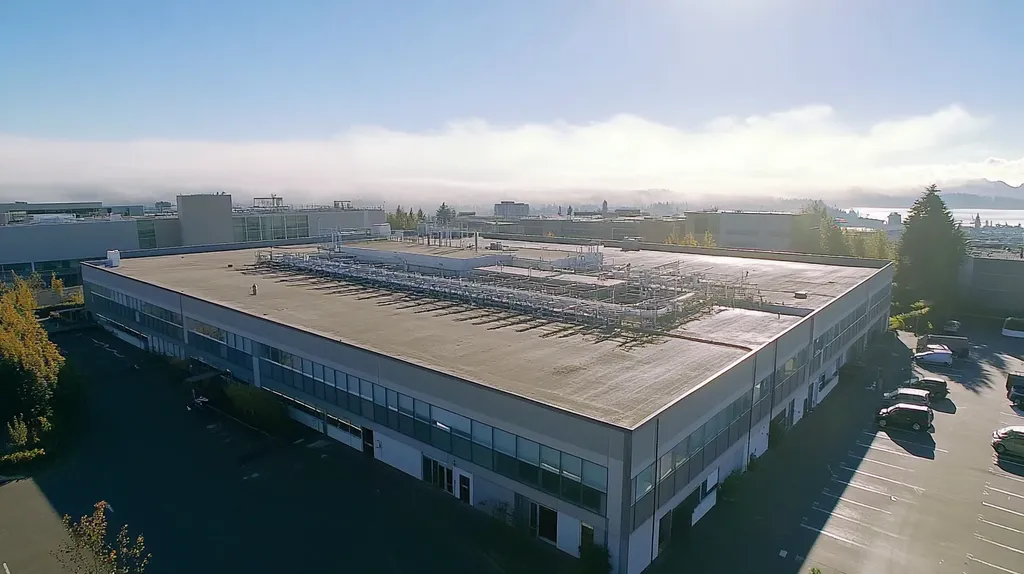Roof penetrations represent the single greatest threat to commercial roofing systems, with studies showing they account for over 70% of all roof failures. Even minor penetration-related issues can lead to catastrophic damage, costing facility owners millions in repairs annually.
For property managers and building owners, understanding how to properly manage these vulnerabilities is critical for protecting their investments. The complexity of modern roofing systems, combined with increasing extreme weather events, makes this challenge more urgent than ever.
This comprehensive guide examines key strategies for mitigating penetration risks, from material selection and installation quality to maintenance protocols and compliance requirements that safeguard both assets and occupants.
SECTION 1: PERFORMANCE FACTORS
Commercial roofs are often at risk due to penetrations, which can dramatically shorten their lifespan. Alarmingly, nearly 70% of leaks in roofing systems stem from penetrations related to HVAC units, vents, and piping. For facility managers, addressing these vulnerabilities early is essential to safeguarding their investments and maintaining smooth operations. This section will dive into three key performance factors: material selection and integration, installation quality, and weather resistance.
Material Selection and Integration
The materials selected for roofing systems play a pivotal role in resisting penetrations. Opting for high-quality materials creates a robust barrier against water intrusion and external stressors. For example, thermoplastic polyolefin (TPO) membranes are favored for their flexibility and strong resistance to tearing around penetrative areas.
Equally important is the proper integration of these materials during the roofing system’s design. Insufficient sealing or the use of incompatible materials can create weak points, allowing water to seep in. Facility managers should choose proven systems that emphasize strong, seamless integration.
Utilizing materials with inherent UV resistance can also mitigate degradation caused by sunlight exposure. This choice ensures that the integrity of penetrations remains intact over time, ultimately enhancing the roof’s overall durability and lifespan.
Key Action Items
Installation Quality and Penetrations
The quality of installation is critical to the success of any roofing system, particularly concerning penetrations. Inadequately executed installations can create gaps and misalignments, leading to potential water intrusion. Research indicates that installation errors are responsible for up to 80% of roofing failures.
It’s essential that qualified professionals manage penetrations during installation, ensuring correct flashing techniques and sealant applications to protect these vulnerable spots. Regular training for installation teams can significantly lower the risk of mistakes that lead to expensive leaks.
Furthermore, facility managers must prioritize thorough inspections following installations. Being vigilant allows them to catch and fix potential flaws before they develop into serious problems.
Key Action Items
Weather Resistance and Durability
Weather plays a vital role in assessing how well a roof can handle penetrations over time. Harsh temperatures, heavy rainfall, and strong winds can lead to noticeable wear and tear. Selecting roofing materials tailored to the specific climate of the region can vastly improve performance.
Durability should always be a top consideration when creating a weather-resistant roof. Facility managers should opt for materials boasting high resistance to environmental stressors, such as fiberglass-reinforced membranes that offer added strength against punctures.
Moreover, strategically positioning penetrations can help mitigate risks associated with adverse weather. By situating them in less vulnerable areas, facility managers can lessen the chances of damage due to the elements.
Key Action Items
SECTION 2: FINANCIAL CONSIDERATIONS
In the competitive landscape of commercial real estate, overlooking the financial implications of roofing systems can be a costly mistake. Managing roof penetrations effectively can save property owners significant amounts in potential repairs and lost revenue. Neglected maintenance, on the other hand, increases the risk of leaks and structural damage, underscoring the need for facility managers to address these issues urgently. This section examines return on investment, ongoing maintenance costs, and long-term strategies for saving money related to roof penetrations.
Return on Investment Analysis
Investing in high-quality roofing systems that effectively manage penetrations yields benefits over time. A well-maintained roof not only enhances property value but also reduces risks associated with water damage. For example, a facility that regularly inspects and seals roof penetrations can extend the roof’s lifespan, delivering returns that far exceed initial investments.
Additionally, minimizing risks can lead to lower insurance premiums. Facility managers should seek quotes from insurers that offer discounts for proactive roofing management, which not only affects costs but also enhances asset valuation during potential sales.
When calculating ROI, it’s also essential to consider the financial impact of business interruptions due to roofing failures. Preventing these disruptions further emphasizes the need for timely investments in quality roofing solutions.
Key Action Items
Maintenance and Repair Costs
The hidden costs of neglected roofing penetrations can mount quickly. Regular maintenance is crucial for mitigating these expenses. When penetrations are left unattended, water damage can spiral into costly repairs, with small leaks leading to extensive damage throughout a building.
For instance, a minor leak from a forgotten penetration can lead to ceiling and wall issues, creating a cycle of escalating repair costs and harming tenant satisfaction. Facility managers should establish a regular maintenance schedule that includes inspecting all penetrations to avoid unexpected expenses.
Considering labor, materials, and potential emergency repairs, a comprehensive maintenance strategy is vital. Investing in preventive measures safeguards against rising costs due to compounded damage.
Key Action Items
Long-Term Cost Savings Strategies
Implementing long-term strategies for managing roofing penetrations can result in considerable cost savings. For example, choosing high-quality materials designed to withstand weathering and wear can limit the frequency of repairs.
Technology also plays a key role in modern roofing management. Innovations like drone inspections allow for regular monitoring and early identification of issues before they become serious problems. Adopting these technologies can prevent costly repairs and extend the lifespan of roofing systems.
Moreover, investing in training for maintenance teams ensures they are aware of the unique challenges posed by roof penetrations. This training prepares them to detect potential problems early, aiding in timely interventions that reduce long-term costs.
Key Action Items
SECTION 3: COMPLIANCE REQUIREMENTS
Compliance requirements are essential for maintaining the integrity of a commercial roof. Neglecting building codes and industry standards can result in serious financial repercussions, including costly repairs and premature roof replacements. Alarmingly, more than 80% of roof leaks arise from improperly managed penetrations. For facility managers, prioritizing compliance is critical to minimize risks and prolong the lifespan of roofing systems.
Building Code Compliance
Building codes exist to uphold safety, health, and structural integrity across all properties. These codes define standards for materials, installation methods, and overall performance expectations. Failure to comply can attract severe penalties, including legal issues and increased liability for property owners.
Facility managers need to stay updated on local building codes that govern roofing penetrations. These regulations may specify how roof-mounted structures must be secured or outline acceptable material types for different penetrations. Ignoring these codes not only shortens the roof’s lifespan but also jeopardizes the safety of the entire structure.
Conducting regular audits and inspections is crucial to ensure that roofing work adheres to current codes. Working with certified professionals knowledgeable about these requirements provides additional assurance and minimizes compliance-related risks. Compliant roofs can not only reduce liability but also enhance property value, positively impacting future evaluations and insurance rates.
Key Action Items
Industry Standards and Regulations
Industry standards provide comprehensive guidelines that go beyond mere legal compliance, focusing on best practices for roofing systems. Organizations like the American National Standards Institute (ANSI) and the International Organization for Standardization (ISO) publish standards that dictate materials and installation techniques for various roofing applications.
These standards ensure that penetrations are effectively sealed and reinforced against the elements. For example, the ANSI/SPRI WD-1 standard offers essential installation guidelines for roofing systems in high-wind zones. Not adhering to such standards can accelerate wear on the roof and undermine the overall integrity of the building.
Facility managers should actively monitor updates to industry standards and collaborate with experienced roofing professionals to ensure compliance. Adhering to these benchmarks leads to longer-lasting roofs, reducing the frequency of repairs and minimizing disruptions to daily operations.
Key Action Items
Safety and Health Code Adherence
Roof installations and repairs are inherently risky, making strict adherence to safety and health codes indispensable. These codes exist to protect workers and occupants during roofing operations, as outlined by the standards set by the Occupational Safety and Health Administration (OSHA).
Neglecting these safety regulations can result in serious accidents or injuries at job sites. For instance, OSHA mandates appropriate fall protection for all personnel working at heights. Facility managers have the responsibility to ensure that contractors consistently implement these safety measures, thereby protecting their workforce and reducing liability.
Equipping workers with proper training and safety resources is vital. Commitment to regular safety checks, equipment maintenance, and compliance reviews fosters a culture of safety during all roofing projects. Ensuring adherence to safety codes not only protects employees but also safeguards the facility from financial losses and enhances its reputation among clients and tenants.
Key Action Items
SECTION 4: RISK MANAGEMENT
Effective risk management is essential for extending the lifespan of commercial roofs. Alarmingly, nearly 80% of roof failures stem from poor management of penetrations like vents and drains. These issues demand urgent attention, as they can result in expensive leaks and structural damage that disrupt business operations. This section presents strategies for risk assessment, leak detection, and emergency response that facility managers can implement to protect their roofing systems.
Risk Assessment and Prioritization
Regular risk assessments are crucial for identifying vulnerabilities in roof penetrations. Facility managers should focus on high-risk areas such as HVAC units and exhaust vents. Conducting thorough inspections can uncover potential problems early, allowing for proactive maintenance.
Tools like thermal imaging can help detect hidden leaks related to penetrations. Evaluating the roof’s condition annually enables managers to prioritize repairs based on urgency and impact—preventing unexpected failures and prolonging the roof’s lifespan.
It is also beneficial to maintain a database of penetration-related issues. Documenting repairs and upgrades improves decision-making for future maintenance and aids in evaluating the long-term performance of roofing systems.
Key Action Items
Leak Detection and Prevention
Implementing effective leak detection methods is key to saving costs associated with water damage. Facility managers should install moisture sensors near roof penetrations for real-time monitoring, helping to catch leaks before they worsen.
Regular maintenance of flashing and seals around penetrations is critical, as these components wear over time. Scheduling routine inspections ensures minor issues are resolved before they escalate into major problems.
Additionally, drain strainers and regular debris removal can prevent clogs and pooling water, which significantly contributes to leaks. By maintaining proper drainage, managers greatly reduce the chances of leakage.
Key Action Items
Emergency Response Planning
Having a structured emergency response plan is vital to mitigating risks associated with roof penetrations. Facility managers should develop clear procedures for promptly reporting leaks or damage, ensuring rapid response to minimize disruptions and repair costs.
Assigning specific roles within the emergency response team improves accountability and efficiency during critical situations, facilitating swift mobilization of resources for repairs.
Building relationships with reliable roofing contractors is also essential. In emergencies, having a trusted partner can expedite the response and repairs, especially if they are familiar with the roof system’s specific challenges.
Key Action Items
SECTION 5: OPERATIONAL PROCEDURES
Robust operational procedures are vital for minimizing the impact of roof penetrations. Research indicates that roughly 60% of roofing failures occur due to insufficient maintenance and oversight. Thus, facility managers must adopt proactive measures that include routine evaluations, timely repairs, and comprehensive staff training. These strategies not only enhance roof longevity but also ensure operational integrity across facilities.
Routine Inspection Protocols
Establishing consistent inspection schedules is essential for identifying potential issues with roof penetrations. Routine inspections should ideally take place at least twice a year, with additional checks following severe weather events. During these inspections, facility managers need to assess flashings, seals, and any installed equipment for early signs of wear or damage.
Using a detailed checklist can help bring attention to frequent problem areas like HVAC units and plumbing stacks. Early detection of wear and tear can prevent leaks and extensive roof damage. Keeping a record of findings ensures that no critical issues are missed during subsequent visits.
Incorporating technology such as drones or infrared thermography can significantly enhance inspection effectiveness. These tools provide a safer, more thorough view of roof conditions, which aids in accurate assessments and informed repair decisions.
Key Action Items
Repair and Maintenance Scheduling
Timely repairs are crucial for sustaining the integrity of commercial roofing systems. Facility managers should develop a proactive maintenance schedule to address both minor repairs and routine upkeep. This strategy extends the roof’s lifespan while minimizing disturbances to daily operations.
Allocating budgetary provisions for unexpected repairs allows for swift action when issues arise. Regular maintenance tasks, such as resealing penetrations or replacing worn flashings, should be scheduled according to inspection reports. A tracking system can effectively prioritize repairs based on their severity.
Implementing preventive measures, including metal flashings or improved drainage systems, can lower the frequency of substantial repairs. A forward-thinking approach to repair and maintenance ensures better resource management and operational continuity.
Key Action Items
Training Programs for Staff
Staff training is integral to effective roofing management. Personnel knowledgeable about roof systems can detect signs of deterioration and perform basic maintenance tasks. Training should cover both safety protocols and the specifics of roofing systems.
Equipping staff with skills to handle minor repairs can alleviate the reliance on external contractors, resulting in quicker response times and reduced repair costs. Training should also prepare staff to recognize potential issues during their routine tasks.
Developing comprehensive training modules on material properties and repair techniques enhances awareness. Simulated scenarios can help staff rehearse their responses to various roof-related incidents, improving their confidence and efficiency.
Key Action Items
SECTION 5: OPERATIONAL PROCEDURES
Robust operational procedures are essential for minimizing the impact of roof penetrations. Alarmingly, about 60% of roofing failures arise from insufficient maintenance and oversight. To ensure longevity and integrity, facility managers must adopt proactive protocols. This includes regular assessments, prompt repairs, and comprehensive staff training, all of which contribute to enhancing roofing performance and extending its lifespan.
Routine Inspection Protocols
Establishing consistent inspection schedules is vital for identifying issues with roof penetrations. Ideally, inspections should be conducted at least twice a year, with additional checks following severe weather. During these inspections, it is crucial to evaluate flashings, seals, and any installed equipment for early signs of wear or damage.
A detailed checklist can help highlight frequent problem areas like HVAC units and plumbing stacks. Early identification of wear can help prevent leaks and significant roof damage. Additionally, maintaining records of findings ensures that critical issues are not overlooked during follow-up visits.
Utilizing advanced technology such as drones or infrared thermography can further enhance inspection efficiency. These tools allow for comprehensive views of roof conditions without risking personnel safety, enabling more accurate assessments and informed repair decisions.
Key Action Items
Repair and Maintenance Scheduling
Timely repairs are critical for maintaining commercial roofing systems. Facility managers should establish a proactive maintenance schedule to address both minor repairs and routine upkeep. This strategy not only extends the roof’s lifespan but also minimizes disruptions to daily operations.
Allocating budgetary provisions for unforeseen repairs enables swift action when issues arise. Regular tasks such as resealing penetrations or replacing worn flashings should be scheduled based on inspection reports. A tracking system can effectively prioritize repairs by severity.
Additionally, implementing preventive measures, including metal flashings or enhanced drainage systems, can decrease the need for significant repairs. A proactive approach fosters better resource management and operational continuity.
Key Action Items
Training Programs for Staff
Staff training is vital to effective roofing management. Employees who understand roof systems can identify signs of deterioration and perform basic maintenance. Training programs should encompass both safety protocols and in-depth knowledge of roofing systems.
Providing employees with skills for minor repairs can reduce reliance on external contractors, resulting in quicker response times and lower repair costs. Additionally, staff should be trained to spot potential issues during their routine duties.
Developing comprehensive training modules covering material properties and repair techniques enhances awareness. Simulated scenarios can help staff practice responses to various roof-related challenges, improving their confidence and operational efficiency. Regular refresher courses will keep employees updated on industry best practices.
Key Action Items
Looking Ahead
With roof penetrations accounting for over 70% of commercial roof failures and causing millions in annual repair costs, facility managers can no longer afford reactive approaches to this critical issue.
The integration of proper materials, rigorous inspection protocols, and comprehensive staff training represents the foundation of effective penetration management.
Industry statistics demonstrate that buildings implementing strategic penetration management programs experience 40% fewer leaks and extend their roof lifespans by up to 8 years.
By adopting the systematic approach outlined in this guide, facility managers can significantly reduce risks, optimize maintenance costs, and ensure regulatory compliance while protecting their valuable roofing investments.
The future of commercial roofing clearly lies in proactive penetration management – those who adapt now will realize substantial long-term benefits.
FREQUENTLY ASKED QUESTIONS
Q. What performance factors affect the lifespan of a commercial roof?
A. The lifespan of a commercial roof is influenced by material quality, installation precision, and weather resistance. Choosing high-quality materials and ensuring proper integration during installation can significantly enhance durability. Additionally, selecting materials that can withstand local weather conditions is essential to prevent premature wear and leaks.
Q. How can managing penetrations on an industrial roof save money?
A. Proper management of penetrations minimizes leaks and avoids expensive repairs. By regularly inspecting and maintaining penetrations, facility managers can extend the lifespan of their roofs, ultimately leading to significant cost savings. In addition, proactive measures can reduce the need for emergency repairs, preventing disruptions that could affect revenue.
Q. What are the compliance requirements for commercial roofs?
A. Compliance involves adhering to building codes, industry standards, and safety regulations. Facility managers must stay informed about local codes and ensure that roofing work is performed according to these guidelines. Regular audits can help maintain compliance, which not only enhances safety but also preserves property value.
Q. How can I assess risks related to roof penetrations?
A. Conducting regular risk assessments is crucial for identifying vulnerabilities in roof penetrations. This includes inspecting areas around HVAC units and other fixtures, and utilizing tools like thermal imaging to detect hidden leaks. Documenting these assessments can also aid in prioritizing future maintenance actions.
Q. What operational procedures should I implement for roof maintenance?
A. Implementing routine inspection schedules, maintaining detailed records, and creating a proactive repair plan are key operational procedures. Regular training for staff about roof systems and conducting simulations of potential issues can prepare them for effective maintenance. Timely repairs based on inspections will also enhance the roof’s longevity.
Q. How do I develop a training program for roof maintenance staff?
A. Creating a comprehensive training program should cover safety protocols, material knowledge, and basic repair techniques. Include simulations to help staff practice responses to roof-related scenarios. Regular refresher courses ensure staff stays updated on best practices, enhancing their ability to manage roofing systems effectively.
Q. What proactive measures can I take to prevent roof damage?
A. Utilize high-quality roofing materials that withstand weather impacts and schedule regular maintenance. Implement effective drainage solutions to prevent pooling water. Keeping up with routine inspections and promptly addressing any wear or damage can prevent serious issues and extend your roof’s lifespan.

